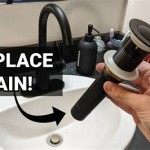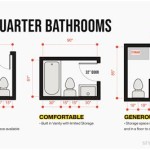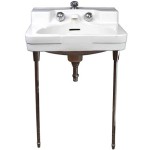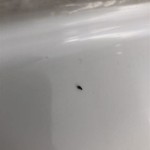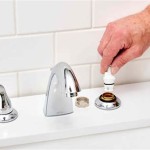How to Fix Bathroom Sink Drain Leverage
A slow-draining bathroom sink can be an annoyance and a potential health hazard. This article will guide you through the process of fixing bathroom sink drain leverage, a common culprit behind sluggish drains. It will explain how leverage issues occur, offer practical steps to resolve them, and provide essential tips for preventing future problems.
Understanding Bathroom Sink Drain Leverage
Understanding the concept of leverage is crucial. Leverage, in this context, refers to the force applied to the drain stopper mechanism. When the stopper fails to create a tight seal, air can leak into the drainpipe, hindering the flow of water. This usually happens due to worn-out parts, improper installation, or a buildup of debris.
Common Signs of Bathroom Sink Drain Leverage Issues
The following signs indicate a problem with your bathroom sink drain leverage:
- Slow draining water
- Gurgling sounds while the sink is draining
- A loose or wobbly drain stopper
- A visible gap between the drain stopper and the sink basin
If you notice any of these symptoms, it's important to take action to fix the drain leverage problem.
Troubleshooting and Fixing Bathroom Sink Drain Leverage
Fixing bathroom sink drain leverage usually involves a few relatively simple steps. Here's a comprehensive guide:
1. Inspect the Drain Stopper
Start by inspecting the drain stopper. If it's a push-up style stopper, check the rubber seal for wear or damage. If the seal is worn, it needs to be replaced.
For a lift-and-turn style stopper, make sure the lift rod is not bent or damaged. If it's bent, try straightening it using a pair of pliers. If it's damaged, you'll need to replace it.
2. Clean the Drain
A blockage in the drain can also contribute to leverage problems. Use a drain snake or a plunger to remove any debris that may be obstructing the drain. You can also try pouring a drain cleaner down the drain, but be sure to use caution and follow the manufacturer's instructions.
3. Check the Drain Tailpiece
The drain tailpiece is the pipe connecting the drain to the drainpipe. If the tailpiece is loose or cracked, it could cause air leaks, hindering drainage. Tighten the tailpiece using a wrench, or replace it if it's damaged.
4. Examine the Drain Trap
The drain trap is a curved section of pipe under the sink that prevents sewer gases from entering the house. If the trap is loose or leaking, air can escape, affecting the drainage efficiency. Tighten the trap or replace it if necessary.
Preventing Future Bathroom Sink Drain Leverage Problems
Here are some tips for preventing future bathroom sink drain leverage issues:
- Regularly clean the drain to prevent buildup of debris.
- Avoid pouring grease or hair down the drain.
- Use a drain screen to catch hair and other debris.
- Replace worn-out or damaged drain components promptly.
- Schedule regular plumbing inspections to catch potential issues early.
By following these tips, you can keep your bathroom sink draining smoothly and avoid the frustration of leverage problems.

How To Replace Or Maintain A Sink Pop Up Drain Assembly

How To Replace Or Maintain A Sink Pop Up Drain Assembly

How To Replace Or Maintain A Sink Pop Up Drain Assembly

How To Replace Or Maintain A Sink Pop Up Drain Assembly

How To Replace Or Maintain A Sink Pop Up Drain Assembly

How To Replace Or Maintain A Sink Pop Up Drain Assembly

How To Fix A Bathroom Faucet 14 Steps

How To Replace Or Maintain A Sink Pop Up Drain Assembly

How To Adjust A Sink S Pivot Rod That Is Too Short Ehow

When Snaking A Drain Doesn T Work Ben Franklin Plumbing
Related Posts
